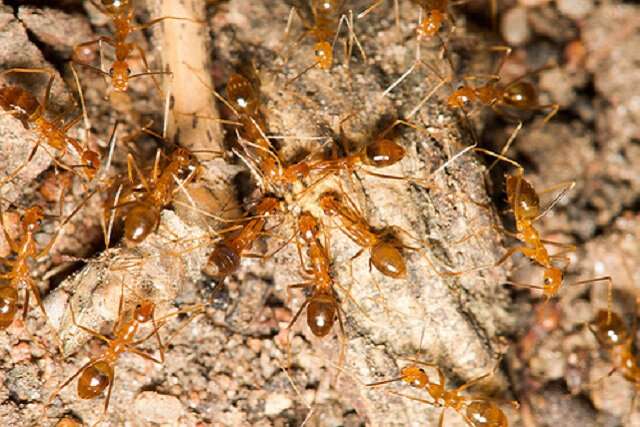April 7, 2023 report
This article has been reviewed according to Science X's editorial process and policies. Editors have highlighted the following attributes while ensuring the content's credibility:
fact-checked
peer-reviewed publication
trusted source
proofread
Yellow crazy ant males have two sets of DNA

A small international team of molecular and evolutionary scientists has discovered that male yellow crazy ants (also known as long-legged ants) have two sets of DNA throughout their bodies. In their paper published in the journal Science, the group describes the unique find and discusses possible reasons for it. Daniel Kronauer with The Rockefeller University has published a Perspective piece in the same journal issue discussing the work by the team and suggests that the unique genetic feature of the ants may explain why they are such a successful invasive species.
Prior research has shown that yellow crazy ants, which are native to Asia and West Africa, have the ability to adapt well to new environments, making them a successful invasive species. Now it turns out that they may have an advantage that has not been seen before: Males have dual sets of DNA.
One of the most basic concepts of biological science is that multicellular organisms develop from a single-cell zygote into a creature with a unique genome. The only exceptions to this rule have been chimeras, which are generally considered accidents of nature. In this new effort, the research team found another exception—male yellow crazy ants with dual sets of DNA.
Prior research had shown anomalies in crazy yellow ant genetics, but until now, it was not clear what was behind apparent discrepancies between queens, males and worker ants. To clear up the mystery, the researchers conducted population genetic and phylogeographic studies of specimens collected from sites across Asia.
They discovered that male yellow crazy ants have two separate genetic lineages—no fusion between maternal and paternal nuclei occurs; thus, both remain active in all males of the species. The research team points out that their findings represent the first-ever discovery of obligate chimerism. They suggest that such chimerism may result from a conflict between competing genetic lineages. And Kronauer suggests that this unique genetic feature may help to prevent inbreeding, which could in turn help the ants survive in unfamiliar territory, explaining their success as an invasive species.
More information: H. Darras et al, Obligate chimerism in male yellow crazy ants, Science (2023). DOI: 10.1126/science.adf0419
Daniel J. C. Kronauer, The unusual genetics of invasive ants, Science (2023). DOI: 10.1126/science.adh1664
Journal information: Science
© 2023 Science X Network





















